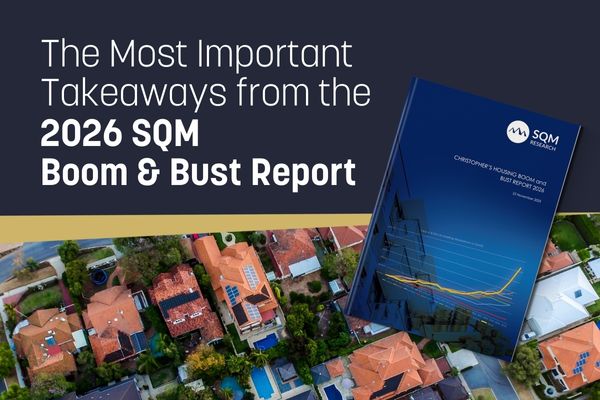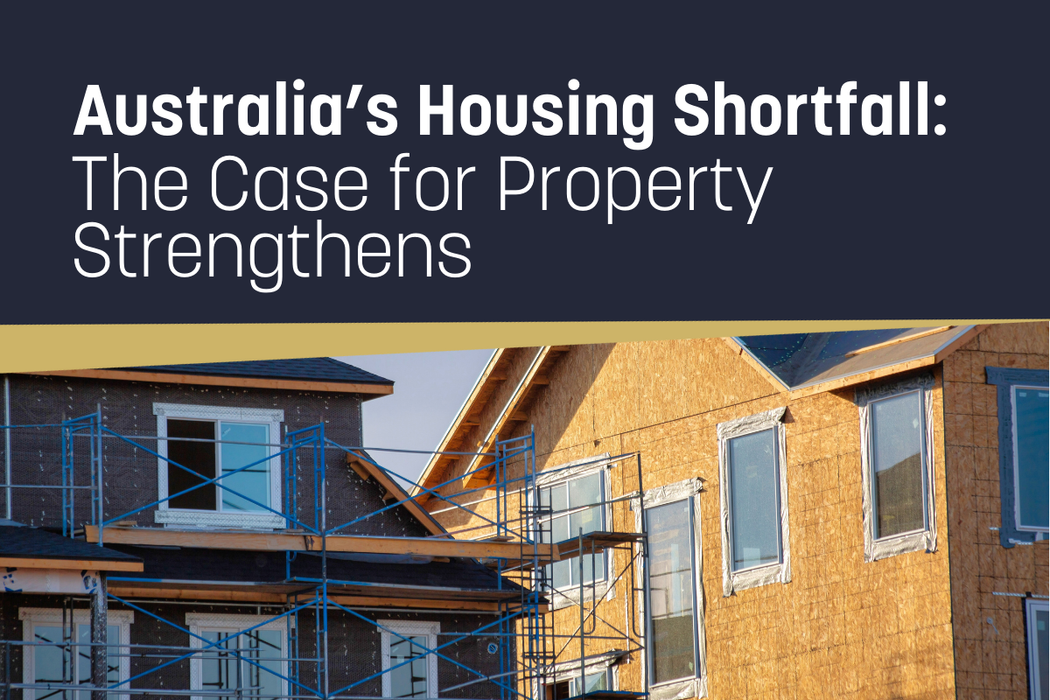Unpack recent Core Logic Market Update
Melbourne
|
Commercial

This week we are unpacking the research and giving our thoughts on the most recent data released from CoreLogic.
Sales volume increasing from rolling 12-month of 508,610 for June to 511,200 for July and as might be expected, this equates to an increase in transaction value of $459.2 billion to $466.4 billion for the 12 months.
Mortgage debt is 2.3 trillion, which suggests that whilst higher interest rates are adversely impacting the overall economy, and creating a significant burden for some, particularly recent buyers and highly leveraged investors, the number is a small minority of the overall population.

Despite an increase in demand for dwellings from our growing population, affordability has become a key issue. As a result, the rise in national property prices has slowed. The rolling quarterly gain down from 3.3% to 1.7%, 12-month from 9.7% to 7.6%. Capital cities still growing faster than regional, and in most places prices continue to rise albeit at a slower pace – just like inflation.

Looking at the rolling cycles it is easy to conclude we have passed the peak and over the coming 6 months or so, price growth will decline as a continuation of the rolling cyclical waves. And growth in prices will decline until interest rates fall and then we should anticipate a lift into the next cycle.
But keep in mind, this is a decline in growth, not a decline in prices. Overall properties continue to cost more each month in most places than they did the previous month. This is symptomatic of inflation, and the natural effect of population increasing into an environment of excess demand than supply for dwellings. Household density will have increased, and will likely fall as soon as interest rates decline. Already fixed-rate loans are cheaper than variable.

Prices are not going up everywhere. In Hobart and Melbourne they are falling. In Perth they are soaring and lifting the national average. Even in Melbourne, I would think there are some suburbs that are performing really badly, and others that continue to gain. A city with a dichotomy in suburbs suggests buyers are well-advised to make use of expert advise from a Buyers Agency.

Graph shows affordability continues to be the key driver of property demand in most cities, with price growing fastest in the cheapest segments, and slowest in the most expensive and otherwise most desirable segments . There are two exceptions – Canberra, where the most expensive segments continue to outperform and in Darwin, which might indicate increased interest in that market, with bargain price desirable properties selling first and lesser ones to benefit later. I know Darwin tends to burn investors and is a unique market so tread with caution

“Although easing month-on-month, annual sales activity remains 9.3% higher than this time last year and is 5.1% above the previous five-year average.” CoreLogic prices are increasing – a very health market Nationally, particularly if we are at the peak of the interest rate cycle.
However, time to sell has increased. The national median time on market rose to 33 days over the three months to July, up from a recent low of 27 days over the three months to April. Sydney averaged 34 days, Melbourne 39 days, but Perth fell to 10 days.
Vendor discounts remain low, only around 3.7% - and remember this is within the context of much higher prices and interest rates; remains a very resilient market.
Listings – “Although winter traditionally is a seasonally slow period, over the four weeks to 4 August, CoreLogic observed 36,973 new listings nationally, which is 1.0% higher than this time last year and 7.7% above the previous five-year average. However, market dichotomy also observed, with listings increasing 12.5% in Melbourne and 16.9% in regional Victoria where a “buyer’s market” conditions exist, compared to a decrease in listings of 21% for Perth or 18% for Adelaide where a shortage of stock has created a “seller’s market”.
Rental growth – annualised rental growth has eased from 9.7% to 8% in capital cities, but this is still significant growth, well above both average and inflation. The impact on property owners has been to improve rental income, offset (at least partially) interest costs and in many areas increase the attractiveness and affordability of investment property. From a tenant’s perspective this is a major concern, and it is reflected in inflation numbers, causing hardships, decreasing non-essential consumption and ultimately will force interest rate cuts – which paradoxically will be good for property owners. Better to be a landlord than a tenant.
Rental yields – In an environment of rising property prices where all else remains the same, you would expect rental yields to fall. Conversely, when property prices are falling rental yield rises. We have an environment of both rising property prices and rents, so not surprisingly national gross rent yields remained steady for the 20th consecutive month at 3.7%. But CoreLogic notes “Although steady at the national level, yields have been more varied across the capitals over the year to date, with yields rising in Sydney, Melbourne, Hobart and Canberra, and falling in Brisbane, Adelaide and Perth. However, this is not because rents have fallen in Adelaide, Brisbane or Perth, but rather because prices have increased even faster than fast rental growth.
Dwelling Demand & Supply

Monthly dwelling approvals declined by -6.5% in June (units down 18.4%, houses down 0.2%) to just 163,317 approvals nationally. This is 18.9% below the decade average, the lowest annual count seen since March 2013, and in an environment of surging population growth. No wonder dwelling prices are increasing despite higher interest rates and increased number of people per dwelling. And don’t forget that with high construction costs and labour shortages, many approved projects are not being built.
Lending:

In June, the value of new housing lending rose 1.3% to $29.2 billion. The rise was driven by a 2.7% lift in investor lending, while owner-occupier lending saw a milder 0.5% increase. The value of residential loans continues to rise being almost 20% higher than the value of lending seen this time last year.
One can easily understand owner-occupied lending increasing because property prices have risen. But the strong increase in investor lending suggests the popularity of the view that property is a great asset, a protection against inflation and creeping poverty, and the best means to safeguard a comfortable retirement and a home for one’s children.

First time home buyers made a sizeable minority of purchases in June – almost 30% of all loans.
You got to wonder how many of the deposits were courtesy of the Bank of Mom & Dad? Best prepare for your kid’s home ownership future as early as possible – and as tax and inflation erode savings, this is probably best through the property ladder.

Interest rates – and where Mom & Dad can’t help the banks make up the difference. Noticing that short-term fixed rates are below variable, and likely to remain so at least until rate cuts start kicking in next year. The inverse yield curve is getting steeper, and even long-term rates are lower than cash, but Australian banks are reluctant to lend retail clients fixed loans for longer than a 3 years duration.
CoreLogic also noted: “Mortgage originations for ‘riskier’ types of lending remains near historic lows. The share of interest only and high LVR loans rose slightly over the past 6 months. Interest-only lending comprised 19.8% of new loans, well below the historic highs in the mid-2010s as were high LVR loans.
Conclusion: Overall a resilient market despite higher interest rates, continued strong demand for homes, and reasons to anticipate prices will continue to rise, particularly as interest rates fall. Banks remain cautious lenders and any recession will not be from a banking crisis that could significantly and permanently affect property prices. Facts validate our outlook for continued growth in property prices, but not everywhere and not at the same rate. Property expertise continues to enhance the chances of a profitable purchase.
Reach out if you think expertise is required to maximise your investment decisions







